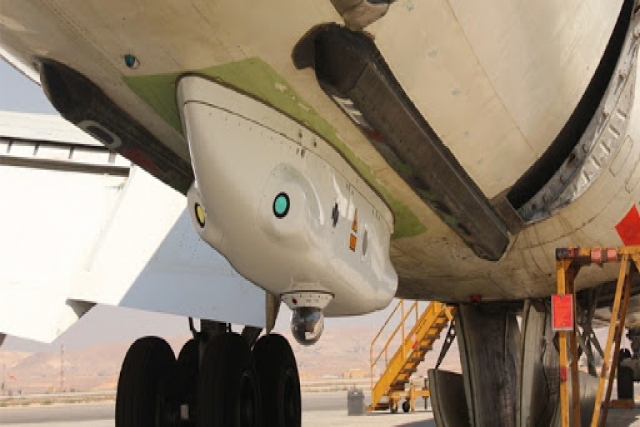Atlas V Rocket Launches Space Force’s 5th SBIRS Geo-5 Missile Warning Satellite

An Atlas V rocket carrying the U.S. Space Force’s SBIRS Geo-5 missile warning satellite was launched from Cape Canaveral Space Force Station in Florida earlier today.
As planned, Space Based Infrared System Geosynchronous Earth Orbit (SBIRS GEO-5) satellite—built by Lockheed Martin—is responding to the Space Force’s Space Delta 4 operations team’s commands. Signal acquisition was confirmed approximately ~36 minutes after the satellite's 1:37 p.m. EDT launch aboard a United Launch Alliance (ULA) Atlas V rocket. Now separated from the rocket, the satellite is continuing on to orbit under its own propulsion.
SBIRS GEO-5 is the latest satellite to join the Space Force's orbiting Overhead Persistent Infrared (OPIR) missile warning constellation equipped with powerful scanning and staring surveillance sensors. These 24-7, always-on, orbital guardians detect missile launches, support ballistic missile defense, expand technical intelligence gathering and bolster situational awareness on the battlefield.
"The world is a more threatening place now with more than 1,000 ballistic missile launches occurring globally every year," said Tom McCormick, vice president of Lockheed Martin Space's OPIR Mission Area. "SBIRS is the tip of the missile defense spear, seeing all those missiles and providing our military the ability to ensure our national security and the safety of our armed forces."
Built in about five years, SBIRS GEO-5 is the first military space satellite built on an LM 2100 Combat Bus, a version of Lockheed Martin's modernized, modular LM 2100 space vehicle with greatly enhanced resiliency.
The LM 2100 bus is the result of a Lockheed Martin internally-funded, multi-year modernization initiative.

"We designed our modernized LM2100 bus with our military customers' changing, more-contested environment, in mind," said McCormick. "By adding enhanced resiliency features to the LM 2100 we created an initial 'combat bus' for the Space Force for even greater capability."
SBIRS GEO-5 is a step toward achieving the resilient missile warning to be provided by SBIRS' follow on, the Next Gen OPIR Block 0 System. SBIRS GEO-6, launching in 2022, and the first three Next Gen OPIR Block 0 GEO satellites, as well as the future GPS III Follow On (GPS IIIF) satellites, are also based on the LM 2100 Combat Bus.
Lockheed Martin is proud to be part of the SBIRS team led by the Production Corps, Geosynchronous Earth Orbit Division, at the U.S. Space Force's Space and Missile Systems Center, Los Angeles Air Force Base, California. Lockheed Martin Space, Sunnyvale, California, is the SBIRS prime contractor, with Northrop Grumman, Azusa, California, as the payload integrator.
The mission launched on an Atlas V 421 configuration rocket that included a 13.7-ft (4-m) Extra Extended Payload Fairing (XEPF). The Atlas booster for this mission was powered by the RD AMROSS RD-180 engine. Aerojet Rocketdyne provided the RL10C-1-1 engine for the Centaur upper stage and the two AJ-60A solid rocket boosters.
This was the 87th launch of the Atlas V rocket and the 72nd Atlas V to launch from Space Launch Complex-41 in Florida.
ULA’s next launch is the Space Test Program (STP)-3 mission for the U.S. Space Force’s Space and Missile Systems Center, planned for June 23, 2021, from Cape Canaveral Space Force Station, Florida.













